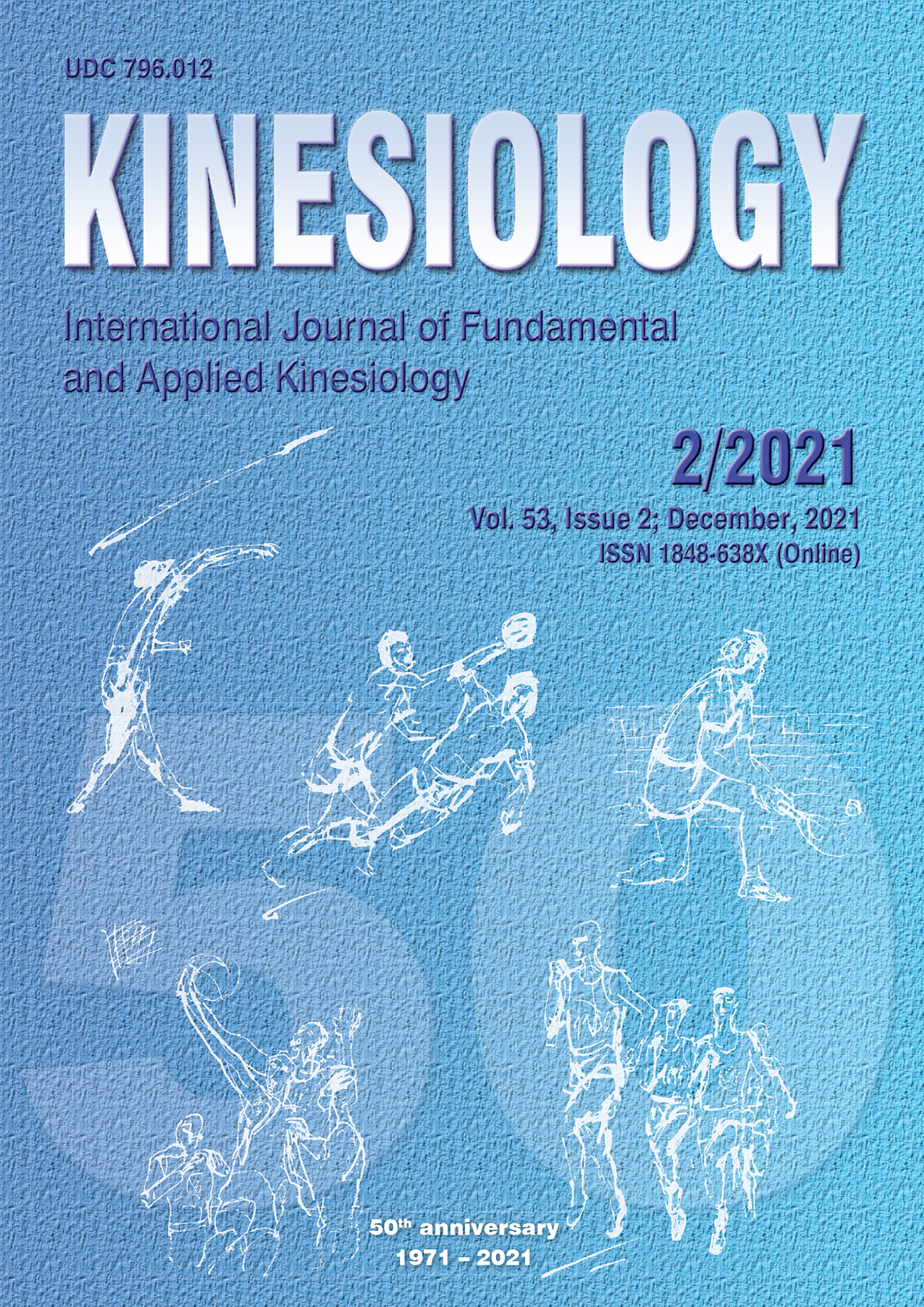MANIPULATING THE PITCH SIZE CONSTRAINS THE PLAYERS’ POSITIONING DURING UNBALANCED SOCCER SMALL-SIDED GAMES PLAYED BY DIFFERENT AGE GROUPS
Abstract
We aim to investigate the impact of variable soccer pitch sizes on the position of players during unbalanced small-sided games (SSGs) and compare the responses of players from two different age groups. Forty-eight young players (n = 24 under-13 and n = 24 under-14) took part in the study and played 3 vs. 3 + 1 SSGs on two different pitch sizes (smaller: 36 x 27 m / 139m2 per player; and larger: 40 x 29 m / 166 m2 per player). Players’ positions on the pitch (length, width, length-to-width ratio, stretching index, and spatial exploration index) were assessed by the positional data provided by global position system devices and were compared within age groups and between game formats using a two-way analysis of variance. Results showed higher values of spatial exploration index (SEI) in the larger SSGs than in the smaller format (p<.001). Moreover, a higher length (p<0.001) and length-to-width ratio (p<.001) was observed in the younger group. Finally, the larger format presented higher values of SEI and stretching index, independent of the age group (p<.001). In the smaller format, U-14 players presented a higher stretching index, while in the larger format U-13 players presented higher values in the same variable. We conclude that enlarging the pitch size constrains players’ behaviour during SSGs, and older players are more able to deal with this more complex task context than younger ones.
Key words: football, performance, positional analysis, task constraints, small-sided games
Downloads
Published
How to Cite
Issue
Section
License

This work is licensed under a Creative Commons Attribution-NonCommercial 4.0 International License.
At Faculty of Kinesiology we recognize that access to quality research is vital to the scientific community and beyond. Kinesiology is non-profit journal and all costs of publishing and peer review process are covered by the publisher itself or other funding sources like Ministry of Science and Education of the Republic of Croatia. Full text papers are also available free of charge at http://hrcak.srce.hr/kineziologija. There are no restrictions on self archiving of any form of paper (preprint, postprint and publisher's version).
Articles are distributed under the terms of the CC BY - NC 4.0
Kinesiology does not charge any fees to authors to submit or publish articles in our journal.


